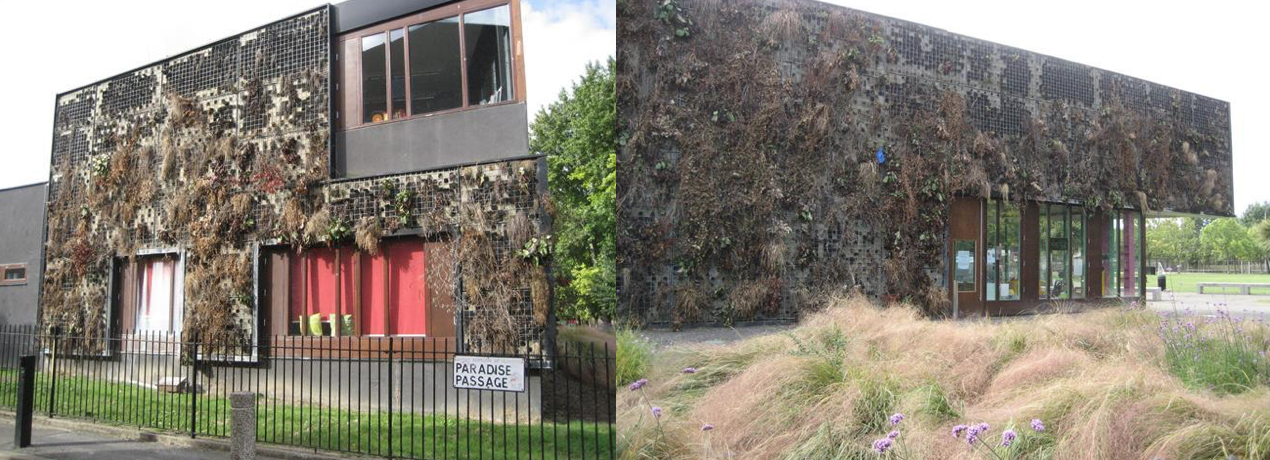Vertical Greenery
Remedial

Maintenance failure occurs when maintenance issues occur and are not promptly addressed such that it results in the eventual degradation and failure of the system57. The total failure of a system such that the vertical greenery is no longer able to support the growth of any plants is only possible when there is no commitment made to rectify maintenance issues and to replace any components, which are damaged. It does not happen overnight and is often a result of prolonged neglect58. Therefore, it is important to understand that even though it is highly impossible for vertical greenery systems to remain evergreen without any form of wither or sparseness of foliage, it is still able to maintain the upkeep of reasonable coverage with ample maintenance measures7. Below are the types of remedial necessary as a prompt response when VGS maintenance failure occurs:
Types of Remedial
- Plant replacement
- Choose hardy plants
- Even with on-going irrigation, drought-tolerant plants are preferred for the outdoor because substrate tends to dry up quickly from the high evaporation rate. For indoor green walls, ability of plants to survive in the air-conditioned environment is important52.
- Plants of similar characteristics should be planted on the same section of the vertical greenery system to prolong their lifespan; otherwise, it would be challenging to design a system that can accommodate the different sets of requirements for varying species.
- Choose plants appropriate and resilient to the site’s microclimate
- Need to understand local climatic and site-specific microclimatic conditions as different species may affect each other’s survival under certain conditions
- A proper way to test would be on-site modeling to observe the plants behavior and adaptability in the new environment and their impacts on each other59.
- Choose plants appropriate to the Owner’s expectations
- Choose hardy plants
- Removal and replacement of unwanted plants or plants part
- Pruning and weeding
- For the plants, pruning and weeding were carried out every two to three months. Weeding had to be undertaken to prevent invasive species such as weeds from colonizing the walls and deviating from the original design intent. Pruning is required more frequently for species that have a faster growth rate and are more aggressive60.
- Choose reliable substrate source (weed less)
- Choose plants with appropriate rate of growth (to owner’s expectation)
- Pruning and weeding
- Changes in maintenance work
- Irrigation/drainage system repair work
- Choose efficient/passive systems, with low maintenance needs
- Fertilizing system
- Choose reliable fertigation system
- Fertilizing can also be done manually during periodic maintenance
- Waterproofing repair work
- Choose reliable system, well managed site work and neat workmanship (during re-installation)
- Structural support
- Installation of a structural support that is able to sustain extreme weather conditions
- Use moisture-resistant and non-degradable material for vertical greenery system in a tropical climate as the high precipitation rate and humidity would corrode non-stainless metal structure and mounting frame
- Examples of such material include stainless steel, aluminum, galvanized steel and PVC
- Waterproof panels or membrane can be fastened to the frame
- Anti-UV addictive must be used to protect the material from disintegration as a result of frequent exposure to direct sunlight
- Irrigation/drainage system repair work
With the growing interest in vertical greenery, design and maintenance issues have to be further researched61. It is increasingly crucial to develop comprehensive standards and guidelines to aid the industry stakeholders62. Below is a list of some possible methods to reduce complexity of maintenance.
Summary of general planting considerations
| Work Scope | Remedial Actions (to reduce maintenance complexity) |
| Plant Replacement | Choose hardy plants
Choose plants appropriate and resilient to the site’s microclimate Choose plants appropriate to Owner’s expectations |
| Pruning and Weeding | Choose reliable substrate source (weedless)
Choose plants with appropriate rate of growth (to owner’s expectation) |
| Irrigation/Drainage System Repair Work | Choose efficient/passive systems with low maintenance needs |
| Fertilising | Choose reliable fertigation system (note: fertilising for green roof, if any, if often done via liquid fertiliser fed through the irrigation system).
Fertilising can also be done manually during periodic maintenance |
| Waterproofing Repair Work | Choose reliable system, well managed site work and neat workmanship (during installation) |
(Source: Dvorak and Volder, 2010)